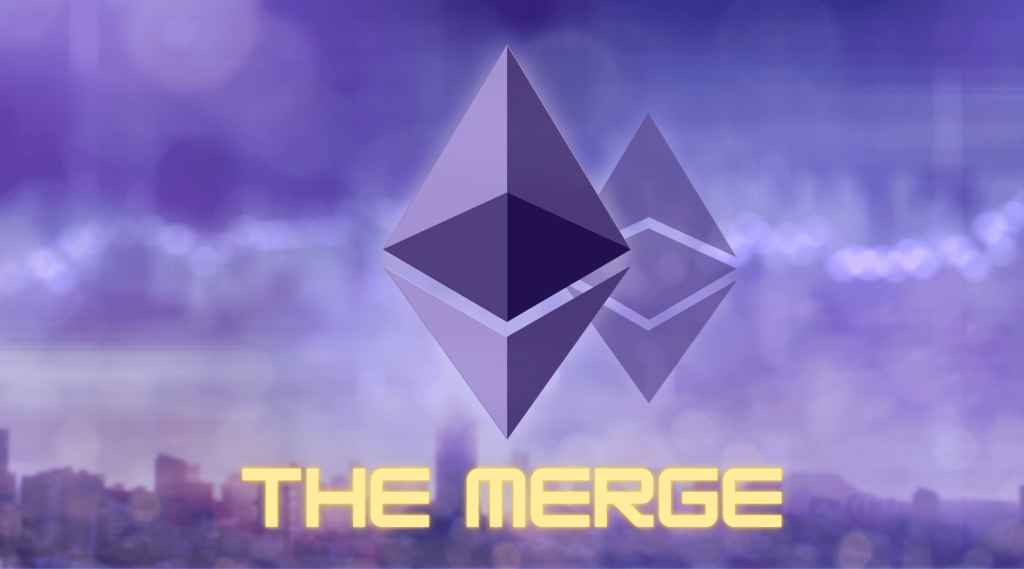“The Merge is the most significant upgrade in crypto history,” says Sami Kassab, an analyst for crypto research firm Messari. “It’s similar to changing the engines on an airplane in mid-flight. One flaw in the code could wreak havoc on the crypto ecosystem.”
Years in the making, The Merge may be crypto’s answer to critics who say the industry is a colossal waste of energy. Ethereum, with a nearly $200 billion market value, now uses the same method of validating transactions as Bitcoin.
Computers compete to solve cryptographic puzzles in that process known as proof of work. The network reaches a consensus on the winner, proving that a block of transactions is valid and should be added to the chain. The winner then receives some Bitcoin, a practice known as mining.
It’s highly energy-intensive, requiring a massive amount of computing work and electricity. Ethereum was built on the same system, and it is also an energy hog, using roughly the same amount of electricity in a year as countries like the Netherlands.
Now, developers are scrapping that model and moving to a much greener system for processing transactions, called proof of stake. Instead of mining, Ether owners use their tokens as collateral to validate transactions, “staking” them to the network in exchange for a yield paid in the Ether token.
Crypto exchanges and other firms run staking pools, allowing anyone to participate with smaller amounts of Ether. A staker must deposit 32 Ether tokens worth about $50,000 and run some software to participate. The system randomly selects validators, like a lottery.
The shift should eliminate Ether mining. It will cut Ethereum’s energy usage by more than 99%, according to the Ethereum Foundation, sharply reducing the network’s carbon footprint.
That’s just the start of a more extensive makeover. The Merge should also reduce the newly minted Ether produced yearly. And developers are planning more upgrades over the next few years to increase Ethereum’s throughput and lower its usage fees. Ideally, they aim to turn Ethereum into the crypto internet—a base layer for apps, financial services, and many more digital assets like NFTs.

“Today, we talk about decentralized finance. In 10 years, if we are successful, people will call it fito nance, full stop,” says Justin Drake, a researcher for the Ethereum Foundation helping with the project. “For almost any financial transaction, they will use Ethereum.”
Yet The Merge may also have casualties. It could cause glitches, outages, or losses of tokens as the current Ethereum blockchain merges with a new one called Beacon. “A laundry list of elements will need to keep working seamlessly post-Merge to keep exploits and liquidations at bay,” says Sean Farrell, head of digital assets at Fundstrat Global Advisors.
The stakes are high because so much of the crypto industry has a stake in its performance—from exchanges like Coinbase to mining operations, NFT platforms, and stablecoin issuers. “Usually, when you push out a change for a website, it breaks—oh well, it’s not the end of the world. In this case, you can lose a lot of money,” says Katie Talati, director of research at Arca, a crypto-asset manager.
The most immediate effect could be on Ether’s price. Since mid-June, the token has soared more than 50%, while Bitcoin has stayed flat. Both tokens are down about 60% this year, under pressure from rising interest rates and weaker demand for highly speculative tech.
Some analysts say that a successful Merge could make Ether ripe for another run. That’s partly because moving to proof of stake should reduce token issuance to about 0.5% yearly, down from 4.5%. Decreasing the issuance could push up the price. “In the current market, supply and demand are relatively in balance,” says Steve Goulden, a senior analyst for Cumberland, the crypto arm of trading firm DRW Holdings. “Post-Merge, there will be a material supply deficit.”
Ether’s Ups and Downs
The Ethereum network’s token has pushed higher lately on hopes for “The Merge.”
Demand, meanwhile, could get a lift as owners stake their tokens in return for a yield. According to Talati, investors may earn 4% to 8% by staking, depending on how much revenue the network generates and other factors. Institutional funds with a mandate to invest in environmentally friendly assets could also buy Ether as the blockchain’s carbon emissions become less of an issue.
The upgrade could be a boon to companies like Coinbase. The exchange is developing a service that makes it easy for investors to stake their Ether, with Coinbase taking a 25% cut of any income generated. The staking business has already “grown into a great source of subscription and services revenue and is growing nicely,” said CEO Brian Armstrong on an earnings call in August.
However, as in any tech upgrade cycle, there will be a legacy of obsolescence. Some of the biggest losers in this cycle could be mining companies that spent hundreds of millions of dollars on hardware that might be rendered worthless. In August, let 8 Mining (HUT), leaderswhich mines both Bitcoin and Ether, said they were studying how to adapt their Ether mining machines to other tokens or projects. Hive Blockchain Technologies HIVE –1.41% (HIVE), another miner, said a shift to proof of stake “may render our mining business less competitive.”

Chip maker Nvidia looks like another casualty. The industry has adopted the company’s graphics chips and cards to mine Ether. But demand now appears to be evaporating. Nvidia, whose stock is already ailing from a slowdown in gaming and other core areas, said on its recent earnings call that it couldn’t predict how reduced crypto mining might hit demand. Analysts for investment bank Baird say The Merge is likely to “generate a wave of mining GPUs [graphics processing units] on the secondhand market, compounding the inventory woes.”
Longer term, Ethereum may pose more of a threat to rival blockchain networks. Blockchains and tokens such as Solana, Avalanche, and Tezos launched with the promise of being faster and more efficient than Ethereum. All run on proof of stake and have established various uses, but if Ethereum pulls off its upgrades, it may run out of time to prove its relevance.
“Now that Ethereum has caught up with proof of stake, there’s less of an argument for many other blockchains,” Kassab says.
Some crypto companies aren’t taking The Merge lying down. The threat has led a few miners to launch a competing Ethereum blockchain, called a fork, using the proof-of-work method. The idea is to create an Ether spinoff and a parallel universe of smart contracts, NFTs, decentralized finance, or DeFi, applications.
The potential for dueling Ether blockchains forces companies to choose sides or declare neutrality. Exchanges like Coinbase, Binance, and FTX say they will apply their usual listing standards to forked tokens and may allow them to trade. Creators of crypto apps such as Uniswap, Compound, and stablecoin USDC have pledged to recognize only the new Ethereum blockchain.
An Ethereum split has some crypto leaders worried that scammers could find new ways to perpetuate theft and fraud. “Somebody’s going to spend 80 real Ether on a fake Bored Ape,” says Robert Leshner, founder, and CEO of Compound Labs, a DeFi company. “There will be all sorts of disasters,” he says, advising investors to wait for the kinks to be ironed out and “do nothing.”

Another unknown is how Washington will react. Officials at the Securities and Exchange Commission have indicated that Bitcoin and Ether should be treated as commodities—potentially removing those tokens from SEC oversight. But because many investors will buy Ether with the expectation of a yield, some attorneys believe it could make the token look more like a security. If the SEC agrees, crypto exchanges like Coinbase could be vulnerable to lawsuits or enforcement actions if they let it trade on their platforms.
Changes of this size are an “opportunity to try to distinguish the prior analysis from the current analysis,” says Teresa Goody Guillén, a partner at BakerHostetler and former SEC attorney, who believes that Ether still wouldn’t qualify as a security. The SEC declined to comment.
As with all things in crypto, the hype around The Merge already exceeds the reality. Proponents say it could be the start of a Renaissance of valuable apps and services—finally silencing the critics bemused at a multi-billion-dollar industry that has yet to find a raison d’être apart from speculation. Conversely, if it flops, it would be another setback for technology long on complexity and short on real-world utility.
“The most important part of The Merge is the narrative,” Kassab says. “It’s something that everybody is talking about that could bring people back into Web3 and crypto, assuming it’s successful.”
The crypto market is suffering from a crisis of confidence, having lost $2 trillion in value over the past year and drawn the ire of governments worldwide. A successful Merge may not revive the market or its reputation. But it could make crypto a bit greener, at the least, on its path forward.
Source:
https://www.barrons.com/articles/ethereum-bitcoin-crypto-price-merge-
Disclaimer
Although the material contained in this website was prepared based on information from public and private sources that ampraider.com believes to be reliable, no representation, warranty, or undertaking, stated or implied, is given as to the accuracy of the information contained herein, and ampraider.com expressly disclaims any liability for the accuracy and completeness of the information contained in this website.

